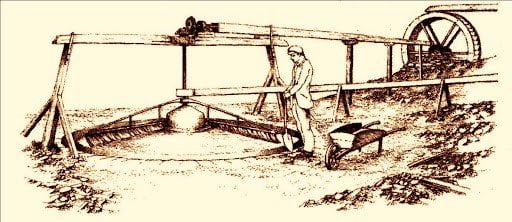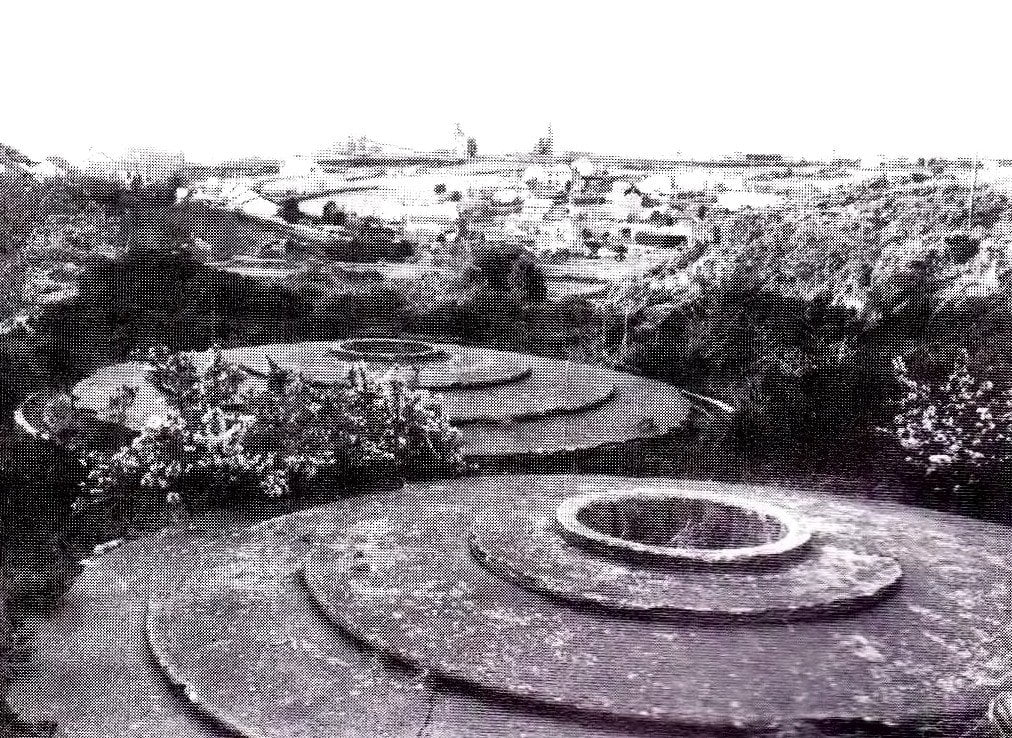It is hard to appreciate in 1995 just how wide-spread and important to the Cornish economy tin streaming used to be. Hardly a valley in the stanniferous districts of west, central and east Cornwall, has been completely untouched by the activities of generations of Cornish tinners. These tinners used the stream and river water to wash impurities from the precious “black tin”. Publicity given to the large-scale destruction at Roscroggan on the Red River, highlights the renewed interest in the ancient industry. This interest has less to do with restarting streaming, as much as in preserving the remains for study by industrial archaeologists and enthusiasts.

The unusual and sometimes unique habitats created by the level of contamination in these streams has also stimulated interest among students of fauna and flora. The valleys where streaming took place can contain a wide variety of buildings, leats, wheel pits, buddles, stamps remains and other artefacts in many states of decay or preservation.
What was the purpose of streaming? There were two distinct types of tin streaming, which in turn could be sub-divided into several others. The original streamers were working for alluvial tin, washed from mineral lode outcrops over many thousands of years, into the valley bottoms. To this alluvium could be added eluvium, the larger “shode” stones, torn more recently from lode out-crops and deposited down hillsides and higher up in the valleys. The alluvium, in the form of cassiterite (Sn02), could vary in size from “as large as goose eggs” down to fine sand and slime. Shode tended to be larger and coarser than that on the valley floors.
The second principal type of streaming is called “tailings” streaming, and it began to grow in importance as lode mining grew, from about the middle of the 1400s. The tailings are lighter sand and slime which contain less tin than the heavier “head” or first separation. As lode ore was broken up, stamped and buddled there was inevitable tailings loss into the adjacent streams. Works were set up specifically to retrieve the lost tin. By the middle of the 18th century this industry rivalled in importance genuine alluvial streaming and by the early 19th century tin streaming generally meant this latter tailings streaming.
Almost all of the industrial remains of tin streaming came from this era of tailings works. The industry virtually ceased after the 1985 tin price collapse, when even sizeable oper-ations, like the one at Tolgarrack, Tuckingmill, closed down. Some idea of the sheer size and importance of the tin streaming industry can be gained when we consider, that on the Red River (Camborne) alone, there were at one time (in the 1870s) up to forty-one stream works, and another fourteen along an adjacent valley. During the peak decade for Cornish tin production (the 1880s), the largest tin mine in Cornwall, Dolcoath, dressed 21,000 tons of black tin – the tin streams on the Red River produced 14,000 tons, which sold for over half a million pounds. A one-and-a-half-mile stretch of the Red River contained twenty-one stream works, used machinery worth £40,000 and employed many hundred men, women and children. Although the Red River had the largest group of tin streams in 19th century Cornwall, there were at least forty other parishes where tin streaming took place then, and many others where alluvial tin was still worked, albeit mostly on a small scale. What is left of this once great industry? Despite considerable destruction, especially during the last two decades, some funded by Derelict Land Grant and other “conservation” money, there still remains much of value. On the Red River above Brea, at Betty Adit, there are several well-preserved buddle bases, wheel pits, leats, engine loadings and dressing floors. Below Tuckingmill, at Roscroggan, Rosewarne, Reskadinnick, Keeve, Rosedown and Menadarva there are scores of acres of slime pits, wheels pits, buddle remains, dressing floors, leats and old wooden launders. The same is true of valleys all over Cornwall, where numerous headweir gates have survived, and in one or two places, almost intact stamps plant remains for our education and pleasure.

Tin Streaming in Cornwall has one of the best docu-mented histories of any industry. Carew, in 1602, and Pryce, in 1778, both gave detailed descriptions of the industry in their days, but the account of the industry given by Thomas Beare, in 1586, is second to none for its description of every aspect of the tin stream workings. Few books bear such clear witness to an industry’s antiquity and importance as does that of Beare. With so much present interest in Cornwall’s industrial past it is to be hoped that as much as possible of what remains can be pre-served for the benefit and enjoyment of our children and grandchildren.
